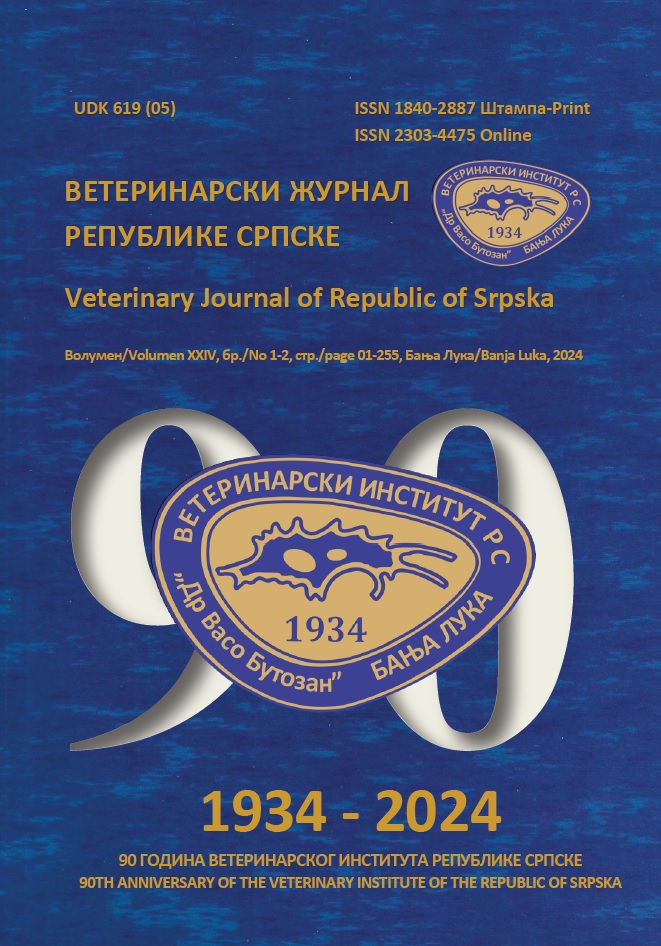AUJESZKY'S DISEASE IN HUNTING DOG IN THE TERRITORY OF THE REPUBLIC OF SRPSKA
DOI:
https://doi.org/10.7251/VETJEN2401211GAbstract
Aujeszky's disease (pseudorabies) is an acute, contagious, viral disease, primarily of pigs, and then of other species of domestic and wild animals, caused by porcine herpesvirus type 1. In pigs, the infection is enzootic, with a high mortality rate upon the first entry of the virus into the group and is characterized by encephalitis and a high mortality rate in piglets, pneumonia in older pigs, and abortions in sows. The disease occurs sporadically in secondary hosts and is accompanied by a short incubation period and a fatal outcome. Carnivores become infected through direct or indirect contact with pigs and ingestion of raw or undercooked meat and internal organs, and is characterized by neurological disorders in the form of pruritus to self-mutilation. The paper describes a case of Aujeszky's disease in the territory of the city of Teslić in 2024, in a hunting dog of the Plot breed, which came into direct physical contact with a wild boar during hunting, as well as the carcass of a shot animal. Initial signs of the disease appeared after 24 hours in the form of inappetence, fever and vomiting. After the initial signs, neurological disorders manifested in the form of tilting the head to the side, hypersalivation and pruritus, which progressed to self-mutilation in the head area. Death occurred 36 hours after the onset of neurological disorders. Macroscopic examination revealed lesions on the skin of the head and neck, conjunctival hyperemia, generalized lymphadenopathy, hyperemia of the lungs, meninges and brain. Gastric dilatation with right-sided splenic torsion was also found, most likely as a result of acute shock and pain. Histopathological analysis revealed non-suppurative meningoencephalitis, characterized by discrete perivascular mononuclear infiltrates and perivascular hemorrhages in the cerebrum, gliosis, satellitosis, and neuronophagia in the medulla oblongata, as well as intranuclear eosinophilic inclusions in medulla oblongata neurons. The results of molecular analysis of brain tissue and tissue from skin lesions, using the qPCR method, demonstrated the presence of porcine herpesvirus type 1 nucleic acid in the examined samples. Sporadic infection of hunting dogs may indicate virus circulation in the wild boar population in the Republic of Srpska.

